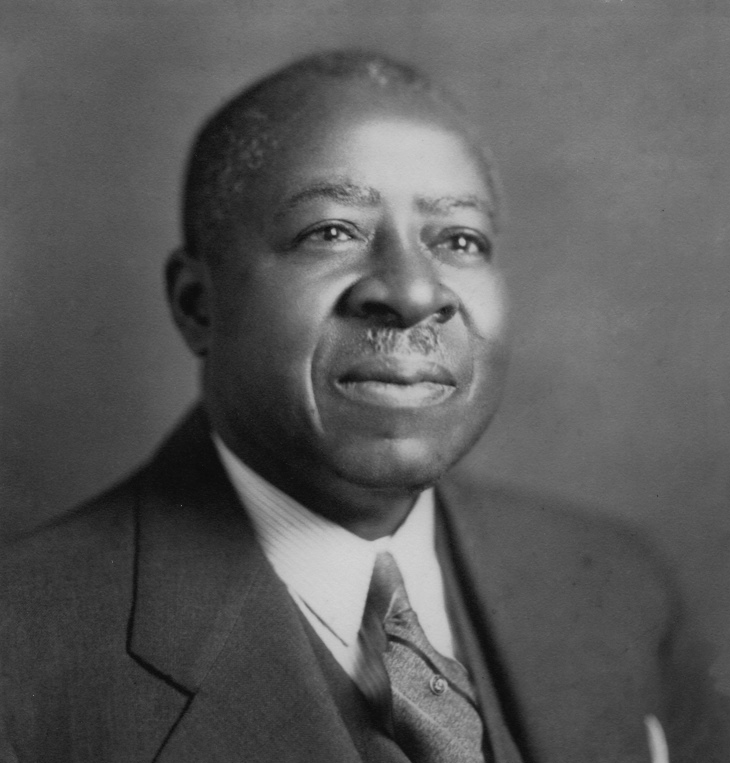Robert Sengstacke Abbott
November 24, 1868 – February 29, 1940
Inducted in 2017
November 24, 1868 – February 29, 1940
Inducted in 2017

No greater glory, no greater honor, is the lot of man departing than a feeling possessed deep in his heart that the world is a better place for his having lived.
From errand boy to lawyer to publisher, as founder of one of the most read Black newspapers in the United States, Robert Sengstacke Abbott gave voice to a Black point of view that had been rendered mute in the early twentieth century.
Born in Georgia to a couple whose parents had been slaves, Abbott was still a baby when his father, Thomas Abbott, died of leukemia. His mother, Flora, later married John Sengstacke, a mulatto of German descent who promptly added Sengstacke to Robert’s name.
Abbott graduated from Hampton Institute in Virginia. After college he moved to Chicago, a city to which he had been exposed while singing with the Hampton College Quartet at the World’s Columbian Exposition in 1893. He graduated from Chicago’s Kent…
read moreFrom errand boy to lawyer to publisher, as founder of one of the most read Black newspapers in the United States, Robert Sengstacke Abbott gave voice to a Black point of view that had been rendered mute in the early twentieth century.
Born in Georgia to a couple whose parents had been slaves, Abbott was still a baby when his father, Thomas Abbott, died of leukemia. His mother, Flora, later married John Sengstacke, a mulatto of German descent who promptly added Sengstacke to Robert’s name.
Abbott graduated from Hampton Institute in Virginia. After college he moved to Chicago, a city to which he had been exposed while singing with the Hampton College Quartet at the World’s Columbian Exposition in 1893. He graduated from Chicago’s Kent College of Law in 1898, but because of racial prejudice was unable to practice law. Armed with a printing background and academic credentials, he converted a $25 investment into the Chicago Defender Newspaper. With the assistance of J. Hockley Smiley, The Chicago Defender became the literary domain for racial advancement. The Defender actively promoted the northward migration of Black Southerners, particularly to Chicago. Its columns not only reported on the movement, but helped to bring about 1917’s “Great Northern Drive,” a term coined by Abbott himself. By the early 20s, The Defender’s circulation reached more than 200,000 people. Distribution of the paper was facilitated by Black railroad porters who both read and shared The Defender. The Defender wrote of injustices but also of a spirit that represented unapologetic Black pride, dignity and assertiveness.
The newspaper also fostered literary careers. At 17, Gwendolyn Brooks started submitting her work to “Lights and Shadows,” the newspaper’s poetry column, and eventually published almost a hundred poems there. Willard Motley and Langston Hughes were just a few of the other big names for whom the Defender was a literary home.
Married twice, Abbott had no children. The Chicago Defender was left in the capable hands of his nephew John H.H. Sengstacke III. Abbott lived at 4742 S. Martin Luther King Drive, Chicago, now a historic landmark known as Robert S. Abbott House.
Chicago Literary Hall of Fame
Email: Don Evans
4043 N. Ravenswood Ave., #222
Chicago, IL 60613
773.414.2603